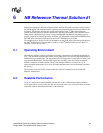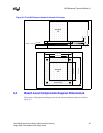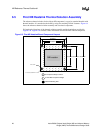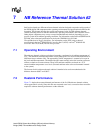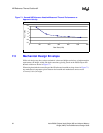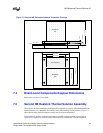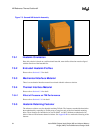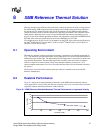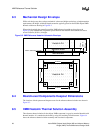
Intel
®
E8500 Chipset North Bridge (NB) and eXternal Memory 31
Bridge (XMB) Thermal/Mechanical Design Guide
7 NB Reference Thermal Solution #2
Intel has developed two different reference thermal solutions designed to meet the cooling needs of
the E8500 chipset NB component under operating environments and specifications defined in this
document. This chapter describes the overall requirements for the 2nd NB reference thermal
solution including critical-to-function dimensions, operating environment, and validation criteria.
Other chipset components may or may not need attached thermal solutions, depending on your
specific system local-ambient operating conditions. For information on the Intel
®
6700PXH 64-bit
PCI Hub, refer to thermal specification in the Intel
®
6700PXH 64-bit PCI Hub
Thermal/Mechanical Design Guidelines. For information on the ICH5, refer to thermal
specification in the Intel
®
82801EB I/O Controller Hub 5 (ICH5) and Intel
®
82801ER I/O
Controller Hub 5 R (ICH5R) Thermal Design Guide.
7.1 Operating Environment
The reference thermal solution was designed assuming a maximum local-ambient temperature of
52°C. The minimum recommended airflow velocity through the cross section of the heatsink fins is
400 linear feet per minutes (lfm). The approaching airflow temperature is assumed to be equal to
the local-ambient temperature. The thermal designer must carefully select the location to measure
airflow to obtain an accurate estimate. These local-ambient conditions are based on a 35°C
external-ambient temperature at sea level. (External-ambient refers to the environmental external
to the system.)
The fastener for this reference thermal solution is intended to be used on motherboard with
thickness between 0.085” and 0.093”.
7.2 Heatsink Performance
Figure 7-1 depicts the measured thermal performance of the 2
nd
NB reference thermal solution
versus approach air velocity. Since this data was measured at sea level, a correction factor would be
required to estimate thermal performance at other altitudes.



